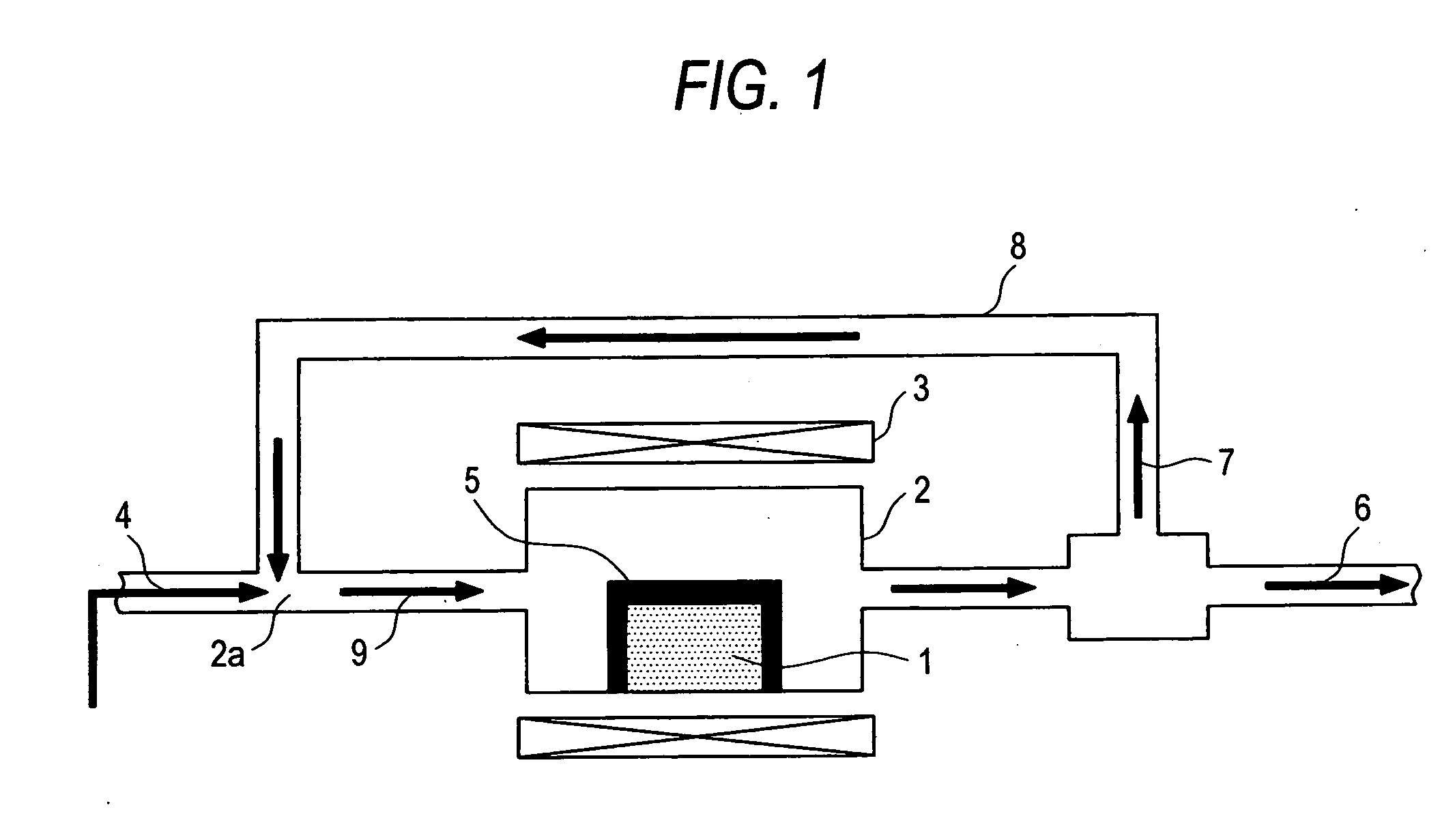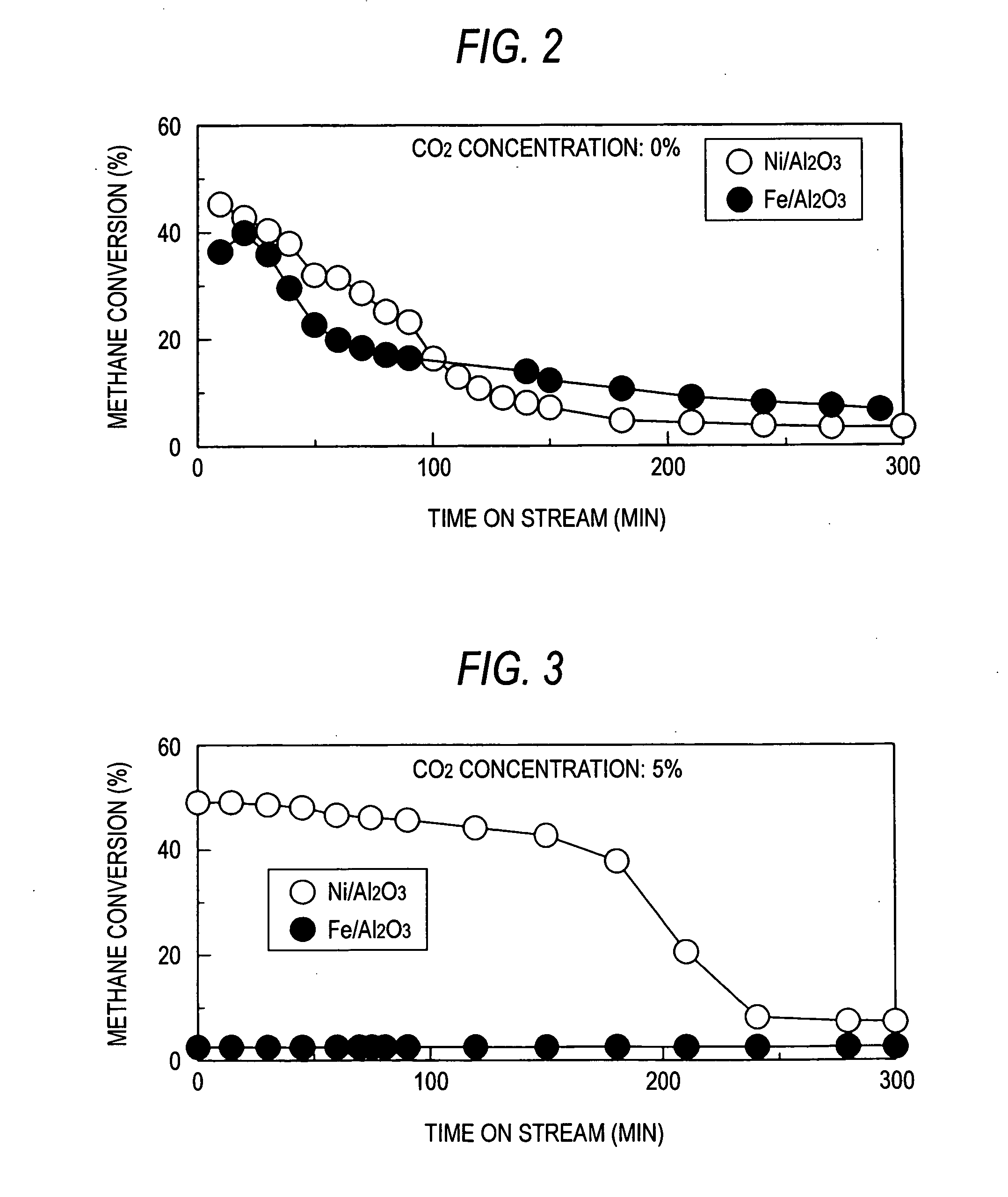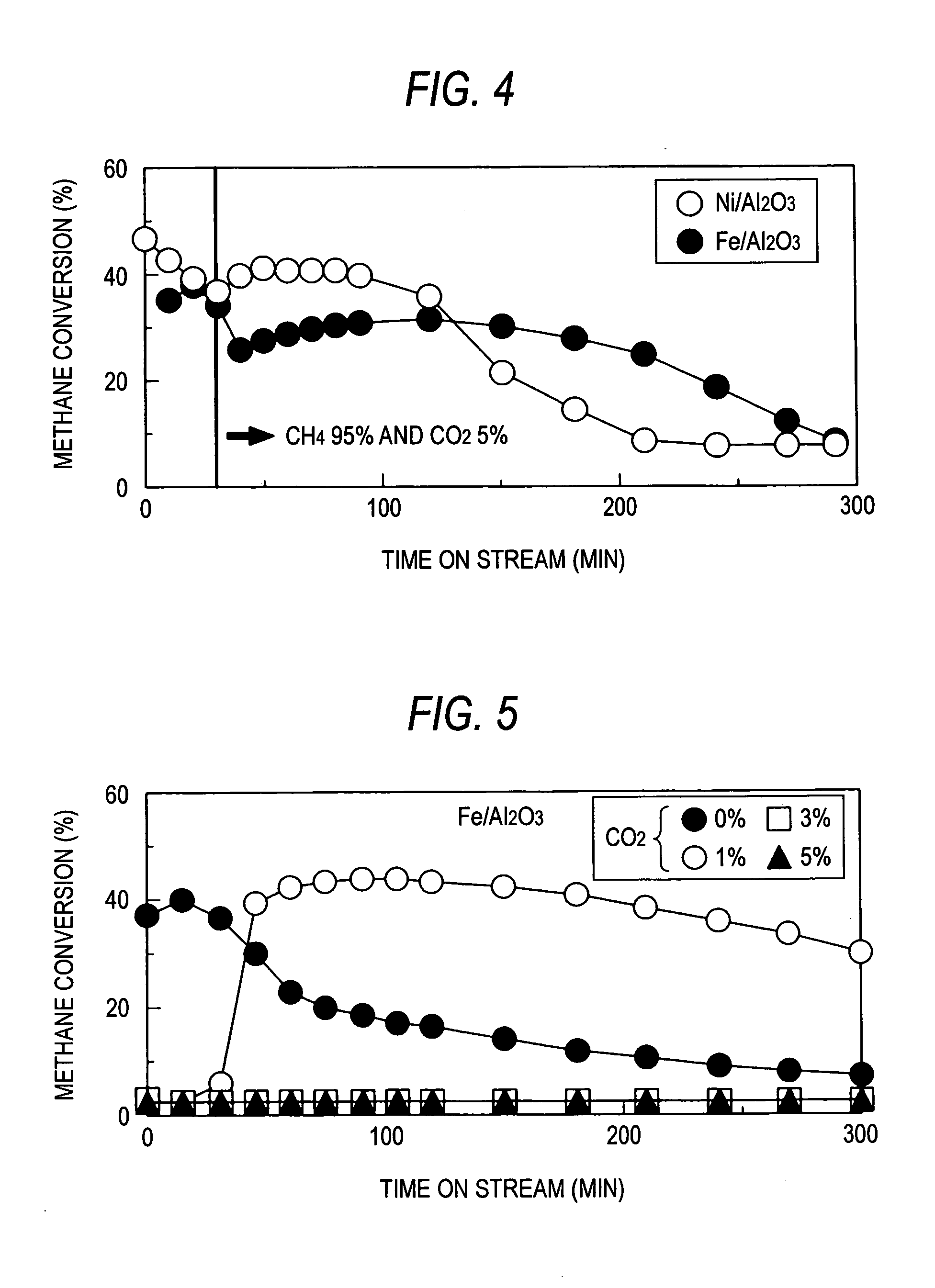Method for producing functional nanocarbon and hydrogen by direct decomposition of lower hydrocarbon
a technology of functional nanocarbons and hydrocarbons, which is applied in the direction of physical/chemical process catalysts, metal/metal-oxide/metal-hydroxide catalysts, carbonsing rags, etc., can solve the disadvantage of reducing the time interval between catalyst replacements, reducing the conversion rate of lower hydrocarbons, and reducing the time interval of catalyst replacements. , to achieve the effect of prolonging the interval of time, preventing the reduction of conversion with tim
- Summary
- Abstract
- Description
- Claims
- Application Information
AI Technical Summary
Benefits of technology
Problems solved by technology
Method used
Image
Examples
embodiments
COMPARATIVE EXAMPLE
[0045] Using a reactor shown in FIG. 1, a methane decomposition reaction was effected at a CO2 concentration of 0%, a reaction temperature of 700° C., a catalyst weight of 0.5 g and a methane flow rate of 100 ml / min. The results are shown in FIG. 2.
[0046] A Ni (10 wt %) / Al2O3 catalyst and an Fe (11 wt %) / Al2O3 catalyst were prepared by impregnating alumina (Al2O3) with an aqueous solution of the respective metal nitrate. The figure in the parenthesis in the formula of the catalysts each indicate the weight percentage of the metals. As can be seen in FIG. 2, both Ni (10 wt %) / Al2O3 catalyst and Fe (11 wt %) / Al2O3 catalyst cause the drop of methane conversion with time on stream. Ni (10 wt %) / Al2O3 catalyst showed a higher methane conversion than Fe (11 wt %) / Al2O3 catalyst up to 100 minutes. However, the superiority of methane conversion was inverted thereafter.
[0047] In general, the methane conversion is affected by the kind of the catalyst used, the reaction t...
example 1
[0050] Using a reactor shown in FIG. 1, a methane decomposition reaction was effected at a reaction temperature of 700° C., a catalyst weight of 0.5 g and a methane flow rate of 100 ml / min. The CO2 concentration was kept at 5% throughout the reaction. The results are shown in FIG. 3. As can be seen in FIG. 3, the Fe (11 wt %) / Al2O3 catalyst caused remarkable inhibition of reaction as compared with the case of FIG. 2 where the CO2 concentration is 0%. On the contrary, the Ni (10 wt %) / Al2O3 catalyst caused definite enhancement of methane conversion up to 150 minutes. Although the experiments were made at the same CO2 concentration, the effect of coexistent gas was exerted in opposite manners. This demonstrates that the optimum value of concentration of CO2 to be coexistent differs with the kind of the catalyst metal.
[0051] If one of the reasons why Ni / Al2O3 catalyst exhibits a lower methane conversion than Fe / Al2O3 catalyst after 100 minutes in FIG. 2 is the reduction of specific su...
example 2
[0052] Using a reactor shown in FIG. 1, a methane decomposition reaction was effected at a reaction temperature of 700° C., a catalyst weight of 0.5 g and a methane flow rate of 100 ml / min. In the course of the reaction, the concentration of CO2 was changed to 5%. The results are shown in FIG. 4.
[0053] The results thus obtained were quite different from that obtained in the case where the concentration of CO2 was kept at 5% throughout the reaction. When the Fe (11 wt %) / Al2O3 catalyst was used, the methane conversion was able to be kept on the order of 30% over an extended period of time. Taking into account the fact that when CO2 was coexistent in a proportion of 5% from the first beginning, the methane conversion was about 3%, this difference is worth noticing.
[0054] It is thought that when CH4 comes in contact with Fe particles in the Fe / Al2O3 catalyst, a surface chemical species CHx obtained by removing H in a number of x from CH4 is produced with the production of hydrogen mo...
PUM
| Property | Measurement | Unit |
|---|---|---|
| pressure | aaaaa | aaaaa |
| temperature | aaaaa | aaaaa |
| pressure | aaaaa | aaaaa |
Abstract
Description
Claims
Application Information
 Login to View More
Login to View More - R&D
- Intellectual Property
- Life Sciences
- Materials
- Tech Scout
- Unparalleled Data Quality
- Higher Quality Content
- 60% Fewer Hallucinations
Browse by: Latest US Patents, China's latest patents, Technical Efficacy Thesaurus, Application Domain, Technology Topic, Popular Technical Reports.
© 2025 PatSnap. All rights reserved.Legal|Privacy policy|Modern Slavery Act Transparency Statement|Sitemap|About US| Contact US: help@patsnap.com



